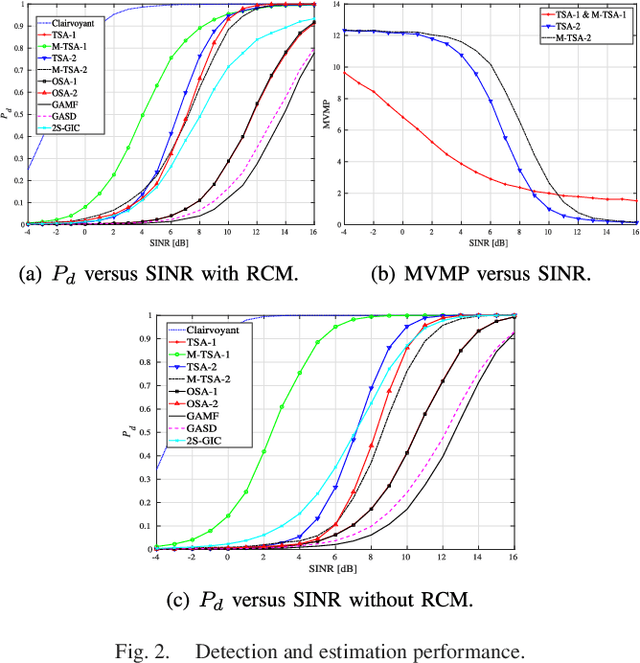Adaptive Detection of Dim Maneuvering Targets in Adjacent Range Cells
Paper and Code
Mar 07, 2021

This letter addresses the detection problem of dim maneuvering targets in the presence of range cell migration. Specifically, it is assumed that the moving target can appear in more than one range cell within the transmitted pulse train. Then, the Bayesian information criterion and the generalized likelihood ratio test design procedure are jointly exploited to come up with six adaptive decision schemes capable of estimating the range indices related to the target migration. The computational complexity of the proposed detectors is also studied and suitably reduced. Simulation results show the effectiveness of the newly proposed solutions also for a limited set of training data and in comparison with suitable counterparts.
* 5 pages
 Add to Chrome
Add to Chrome Add to Firefox
Add to Firefox Add to Edge
Add to Edge